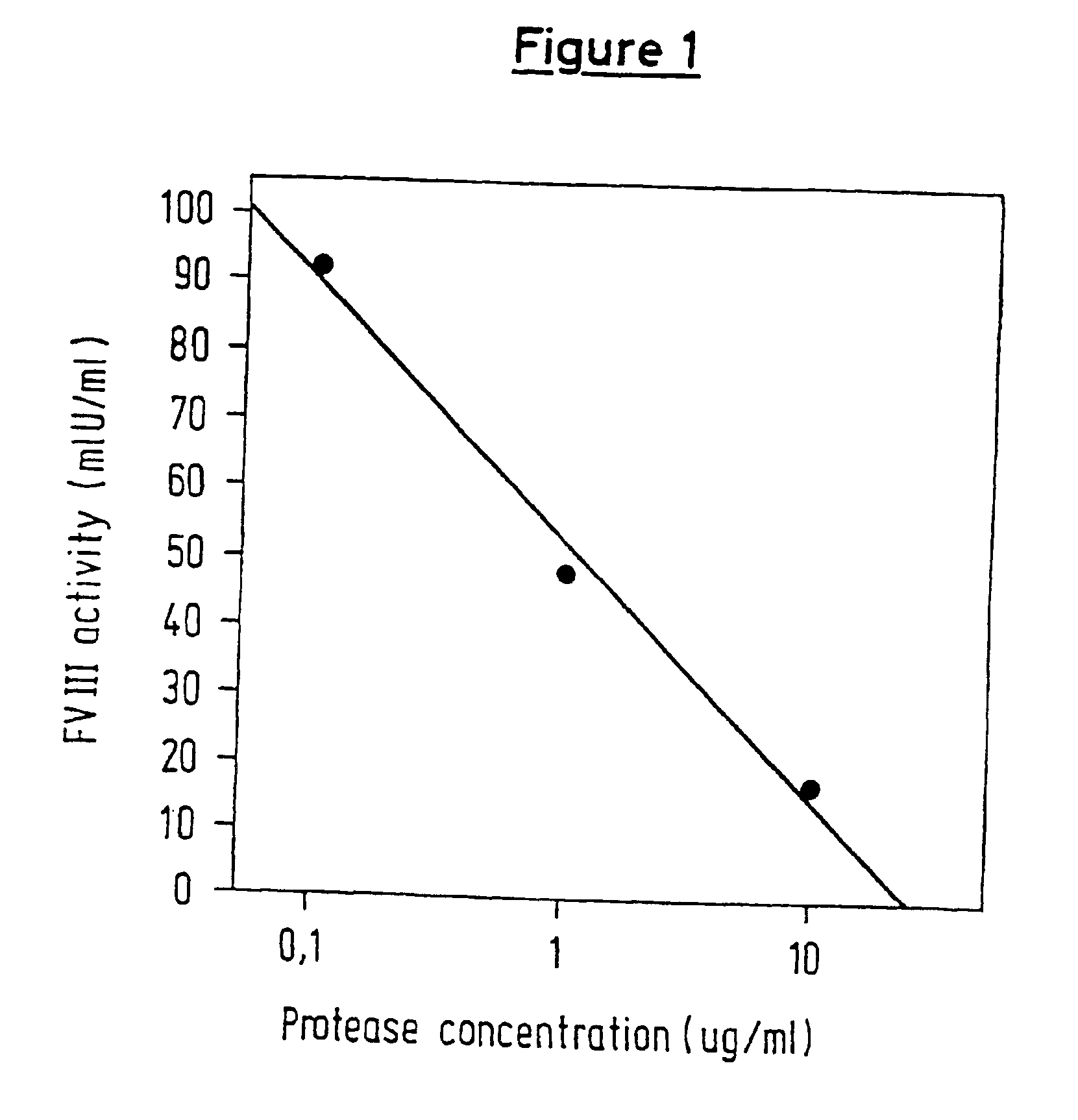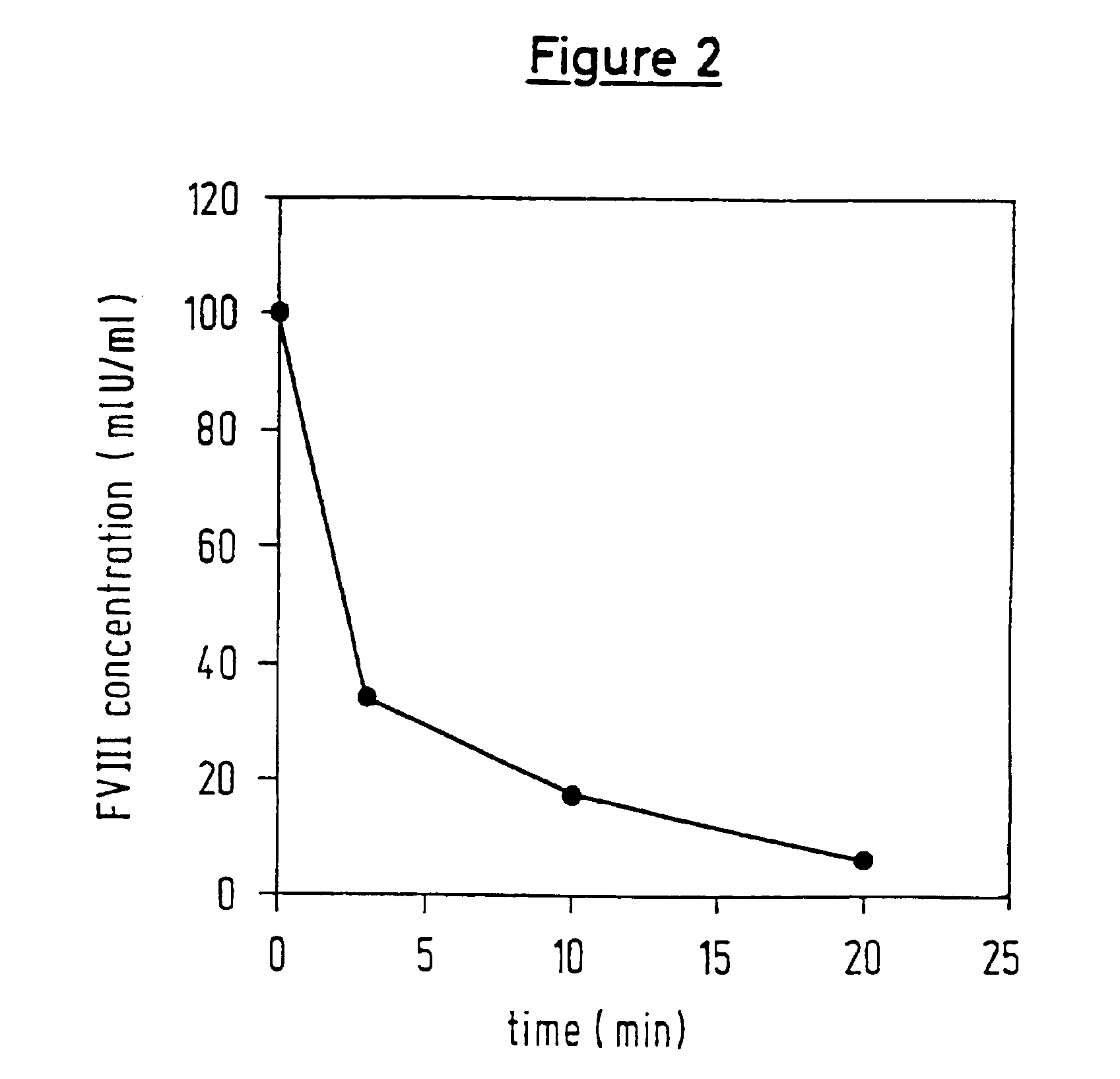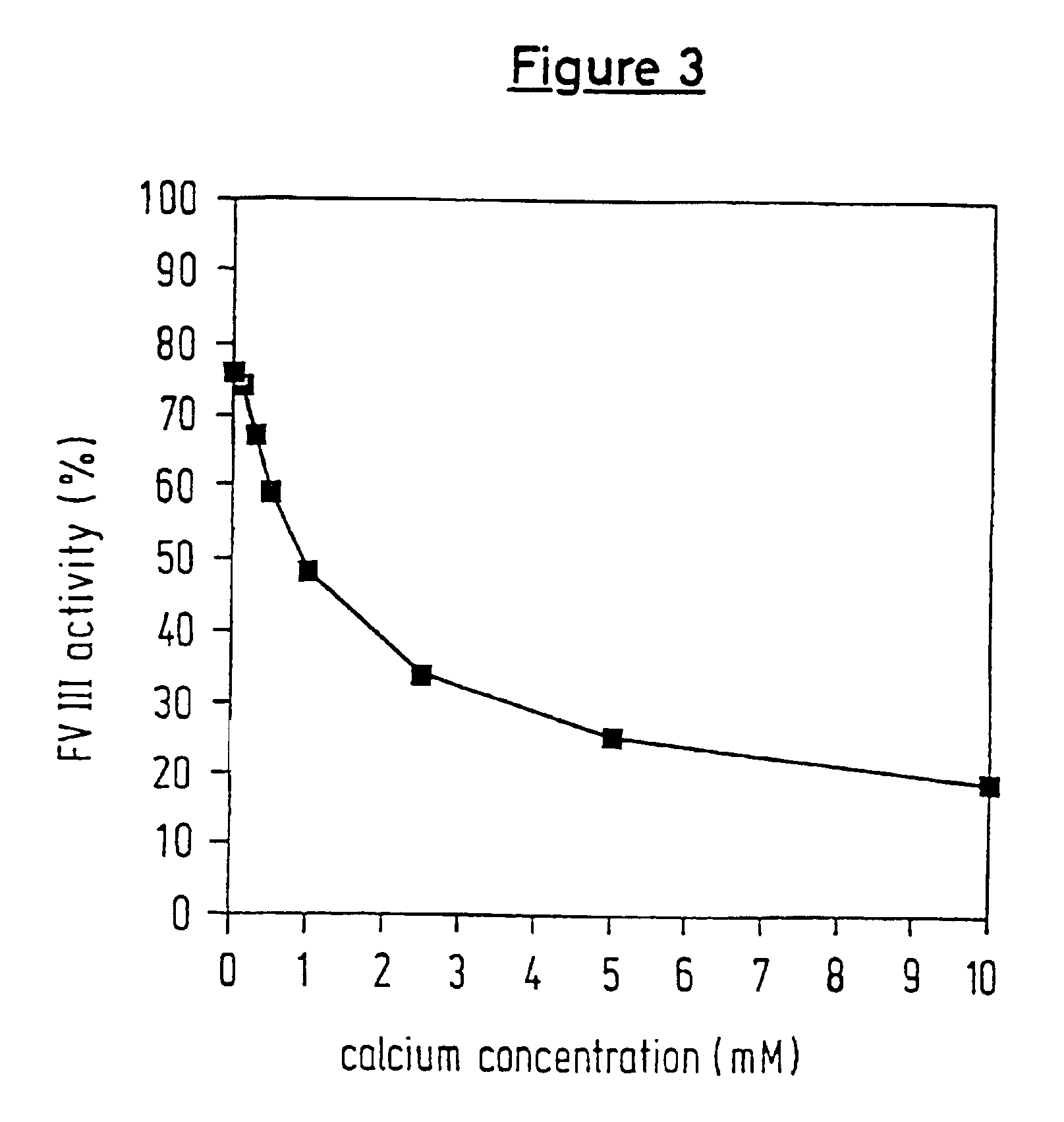Protease for activating clotting factor VII
a technology of clotting factor and protease, which is applied in the direction of depsipeptides, peptide/protein ingredients, unknown materials, etc., can solve the problem of not being able to prevent the activity of the protease from decreasing by 50%, and achieves high amidolytic activity, increased activity, and efficient inhibition of aprotinin
- Summary
- Abstract
- Description
- Claims
- Application Information
AI Technical Summary
Benefits of technology
Problems solved by technology
Method used
Image
Examples
example 2
[0084]This example describes how FVII is activated in a reaction which is dependent on the concentration of the protease and on the time over which the protease is incubated with FVII.
[0085]Test systems and reagents were selected to correspond with the conditions described in Example 1. In a first series of experiments, the initally introduced FVII was preincubated with different dilutions (1:5, 1:10 and 1:20) of the protease-containing solutions (5 min at RT), then treated with aprotinin (to inhibit the protease) and subsequently tested for its content of FVIIa in the FVIIa-rTF assay.
[0086]Once again, the parallel assays, in which the protease had been inhibited by aprotinin before contact with FVII, served as control assays.
[0087]The results are given as activation factors, i.e. correspond to x times the value which was measured in the abovementioned control assay:
[0088]
AssayControlProtease + FVIIProtease + aprotininIncubation + AprotininIncubation + FVIIDilution of theprotease so...
example 3
[0094]Using this example, it will be demonstrated that activation of FVII by the protease is increased in the presence of calcium ions and heparin.
[0095]25 μl of the protease-containing solution were mixed with 50 μl of[0096]buffer (control)[0097]15 mM CaCl2 [0098]50 USP units of heparin / ml[0099]Pathromtin (lipid mixture, aliquot dissolved in accordance with the manufacturer's instructions)
at room temperature for 5 min, and then treated with 150 μl of a tris / NaCl buffer solution (pH 8.2) and 25 μl of the chromogenic substrate S2288 (3 mM); the time-dependent change in the extinction at 405 nm was then measured (at 37° C.). The activation factors, related to the buffer control (x times), are given in the following table.
[0100]
Activation factorAssays(x times buffer control)Buffer control1.0+ CaCl23.6+ Heparin2.6+ Lipid0.9+ CaCl2 + heparin4.3+ CaCl2 + lipid3.3+ Heparin + lipid2.7+ CaCl2 + heparin + lipid3.7
Under the conditions used in this example, marked increases in the activity of t...
example 4
[0101]In each case, 25 μl of a solution, containing 10, 1 or 0.1 μg of protease / ml, were mixed with 25 μl of FVIII (2 lU / ml), after which 25 μl of CaCl2 (25 mM) and 25 μl of Pathromtin® (Dade Behring GmbH) were added. After incubating at 37° C. for 0, 3, 10 and 20 min, the reaction was stopped by adding 400 μl of aprotinin (500 KlU / mg). A sample in which aprotinin was introduced initially served as a control.
[0102]Each sample was diluted in tris-buffer / BSA. In each case, 50 μl of this solution were mixed with 50 μl of the factor reagent (essentially composed of FIXa, FX and a thrombin inhibitor, appropriately modified in accordance with the Coamatic® FVIII test, Chromogenix AB) and incubated at 37° C. for 10 min. After 50 μl of substrate (e.g. S 2765, N-a-Cbo-D-Arg-Gly-Arg-pNA) had been added, the reaction was stopped after a predetermined period of incubation by adding 50 μl of acetic acid (50%), and the OD405 nm was then measured. A standard curve for FVIII was used for determinin...
PUM
| Property | Measurement | Unit |
|---|---|---|
| molecular weight | aaaaa | aaaaa |
| molecular weight | aaaaa | aaaaa |
| molecular weight | aaaaa | aaaaa |
Abstract
Description
Claims
Application Information
 Login to View More
Login to View More - R&D
- Intellectual Property
- Life Sciences
- Materials
- Tech Scout
- Unparalleled Data Quality
- Higher Quality Content
- 60% Fewer Hallucinations
Browse by: Latest US Patents, China's latest patents, Technical Efficacy Thesaurus, Application Domain, Technology Topic, Popular Technical Reports.
© 2025 PatSnap. All rights reserved.Legal|Privacy policy|Modern Slavery Act Transparency Statement|Sitemap|About US| Contact US: help@patsnap.com



